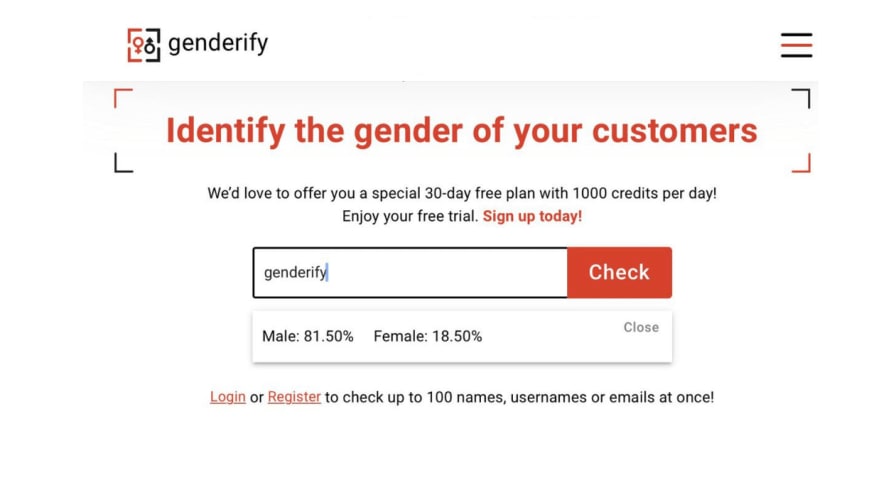Entities
View all entitiesCSETv1 Taxonomy Classifications
Taxonomy DetailsIncident Number
115
Special Interest Intangible Harm
no
Notes (AI special interest intangible harm)
There is no evidence or indication that the system led to any special interest intangible harms through its use or deployment.
Date of Incident Year
2020
Date of Incident Month
07
Date of Incident Day
Risk Subdomain
1.1. Unfair discrimination and misrepresentation
Risk Domain
- Discrimination and Toxicity
Entity
AI
Timing
Post-deployment
Intent
Unintentional
Incident Reports
Reports Timeline
:format(webp)/cdn.vox-cdn.com/uploads/chorus_image/image/67125757/Ec0GHZ0XYAQ_zau.0.jpeg)
Some tech companies make a splash when they launch, others seem to bellyflop.
Genderify, a new service that promised to identify someone’s gender by analyzing their name, email address, or username with the help AI, looks firmly to be in th…

Just hours after making waves and triggering a backlash on social media, Genderify — an AI-powered tool designed to identify a person’s gender by analyzing their name, username or email address — has been completely shut down.
Launched last…

The creators of a controversial tool that attempted to use AI to predict people's gender from their internet handle or email address have shut down their service after a huge backlash.
The Genderify app launched this month, and invited peop…
Variants
Similar Incidents
Did our AI mess up? Flag the unrelated incidents
Similar Incidents
Did our AI mess up? Flag the unrelated incidents
:format(webp)/cdn.vox-cdn.com/uploads/chorus_image/image/67125757/Ec0GHZ0XYAQ_zau.0.jpeg)




